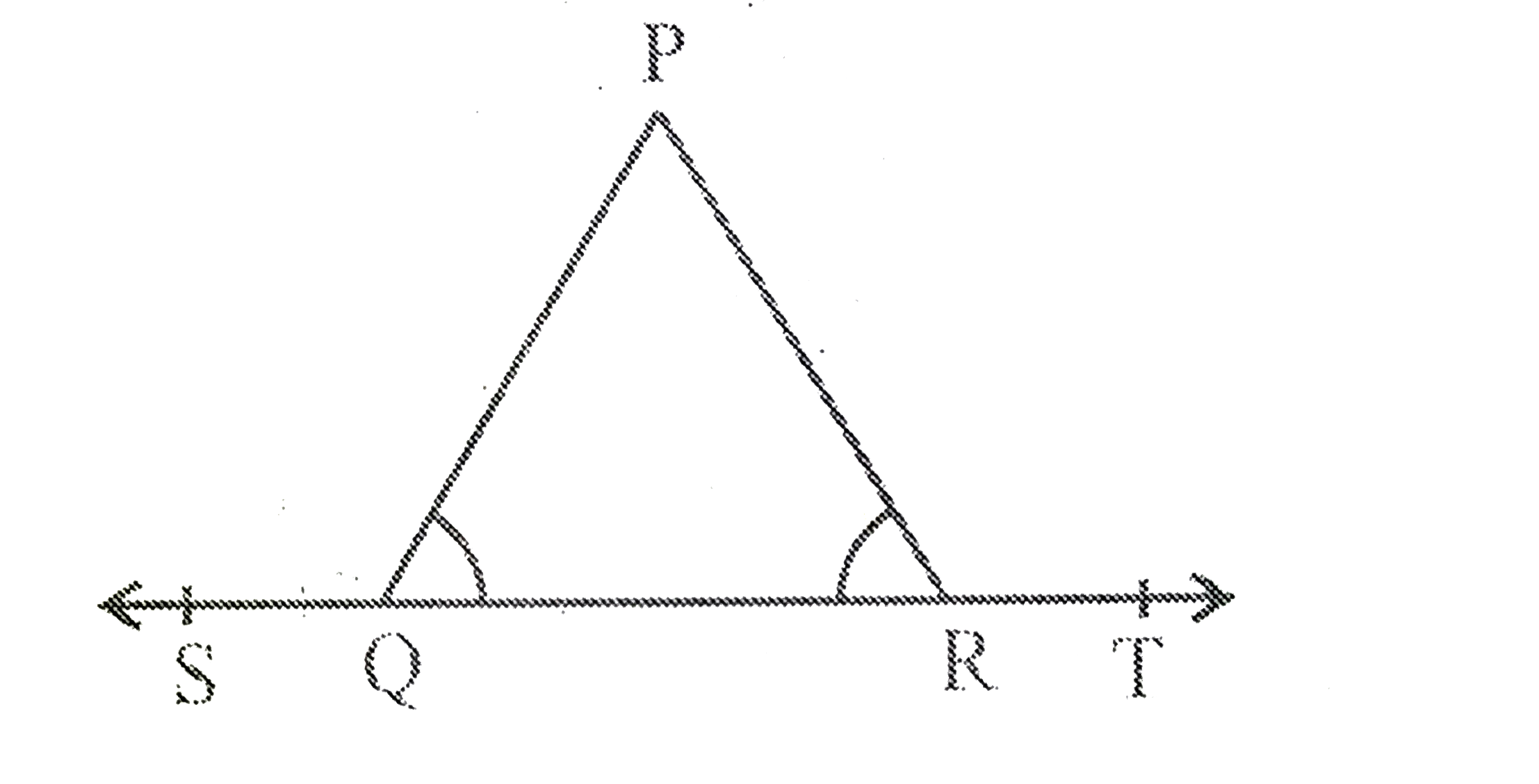If lines px+qy+r=0,qx+ry+p=0andrx+py+q=0 are concurrent, then prove that p+q+r=0(where,p,q,r are distinct).
To prove that p+q+r=0 given that the lines px+qy+r=0, qx+ry+p=0, and rx+py+q=0 are concurrent, we can follow these steps:
Step 1: Set up the determinant
For three lines to be concurrent, the determinant formed by their coefficients must equal zero. The lines can be represented as:
1. px+qy+r=0
2. qx+ry+p=0
3. rx+py+q=0
The coefficients of x, y, and the constant terms can be arranged in a determinant as follows:
∣∣
∣∣pqrqrprpq∣∣
∣∣=0
Step 2: Expand the determinant
We will expand this determinant using the method of cofactor expansion. The determinant can be expanded as follows:
D=p∣∣∣rppq∣∣∣−q∣∣∣qprq∣∣∣+r∣∣∣qrrp∣∣∣
Calculating the 2x2 determinants:
1. ∣∣∣rppq∣∣∣=rq−p2
2. ∣∣∣qprq∣∣∣=q2−rp
3. ∣∣∣qrrp∣∣∣=qp−r2
Substituting these back into the determinant:
D=p(rq−p2)−q(q2−rp)+r(qp−r2)
Step 3: Simplify the expression
Expanding this gives:
D=prq−p3−q3+qrp+rqp−r3
Combining like terms, we have:
D=3pqr−(p3+q3+r3)
Step 4: Set the determinant to zero
Since the lines are concurrent, we set the determinant to zero:
3pqr−(p3+q3+r3)=0
This can be rearranged to:
p3+q3+r3=3pqr
Step 5: Apply the identity
Using the identity a3+b3+c3−3abc=(a+b+c)(a2+b2+c2−ab−ac−bc), we can set a=p, b=q, and c=r:
p3+q3+r3−3pqr=0
This implies:
(p+q+r)(p2+q2+r2−pq−pr−qr)=0
Step 6: Conclusion
Since p,q,r are distinct, the second factor cannot be zero. Therefore, we must have:
p+q+r=0
For three lines to be concurrent, the determinant formed by their coefficients must equal zero. The lines can be represented as:
1. px+qy+r=0
2. qx+ry+p=0
3. rx+py+q=0
∣∣pqrqrprpq∣∣
∣∣=0
We will expand this determinant using the method of cofactor expansion. The determinant can be expanded as follows:
Expanding this gives:
Since the lines are concurrent, we set the determinant to zero:
Using the identity a3+b3+c3−3abc=(a+b+c)(a2+b2+c2−ab−ac−bc), we can set a=p, b=q, and c=r:
Since p,q,r are distinct, the second factor cannot be zero. Therefore, we must have:
Topper's Solved these Questions
- DETERMINANTBOOK - CENGAGE ENGLISHCHAPTER - DETERMINANTEXERCISE - Multiple Correct Answer
5 Videos
- DIFFERENT PRODUCTS OF VECTORS AND THEIR GEOMETRICAL APPLICATIONS BOOK - CENGAGE ENGLISHCHAPTER - DIFFERENT PRODUCTS OF VECTORS AND THEIR GEOMETRICAL APPLICATIONS EXERCISE - Multiple correct answers type
11 Videos
Similar Questions
if p:q::r, prove that p:r=p2:q2.
View SolutionIf p, q, r are in G.P. and the equations, px2+2qx+r=0and dx2+2ex+f=0have a common root, then show that dp,eq,frare in A.P.
View SolutionProve that pxq−r+qxr−p+rxp−q>p+q+r,wherep,q,r are distinct and x≠1.
View SolutionIf p(q−r)x2+q(r−p)x+r(p−q)=0 has equal roots, then show that p, q, r are in H.P.
View SolutionIf p(q−r)x2+q(r−p)x+r(p−q)=0 has equal roots, then prove that 2q=1p+1r.
View SolutionIf p(q−r)x2+q(r−p)x+r(p−q)=0 has equal roots, then prove that 2q=1p+1r.
View SolutionLimes p,q and r are concurrent . Lines q,r and s are also concurrent . Will all the four lines p,q,r and s be concurrent ?
View SolutionThe points (p,q +r) , (q, r+p) and (r, q+p) are _______.
View SolutionIn Figure, ∠PQR= ∠PRQ, then prove that ∠PQS= ∠PRT.
View SolutionIn Fig. 6.15, ∠PQR=∠PRQ, then prove that ∠PQS=∠PRT.

View Solution
